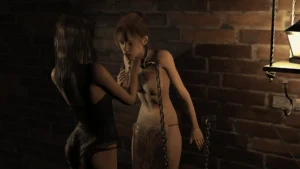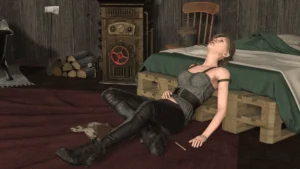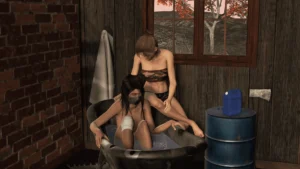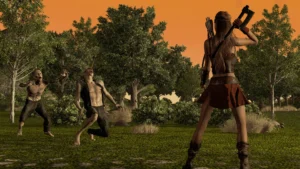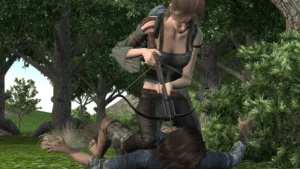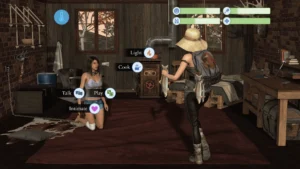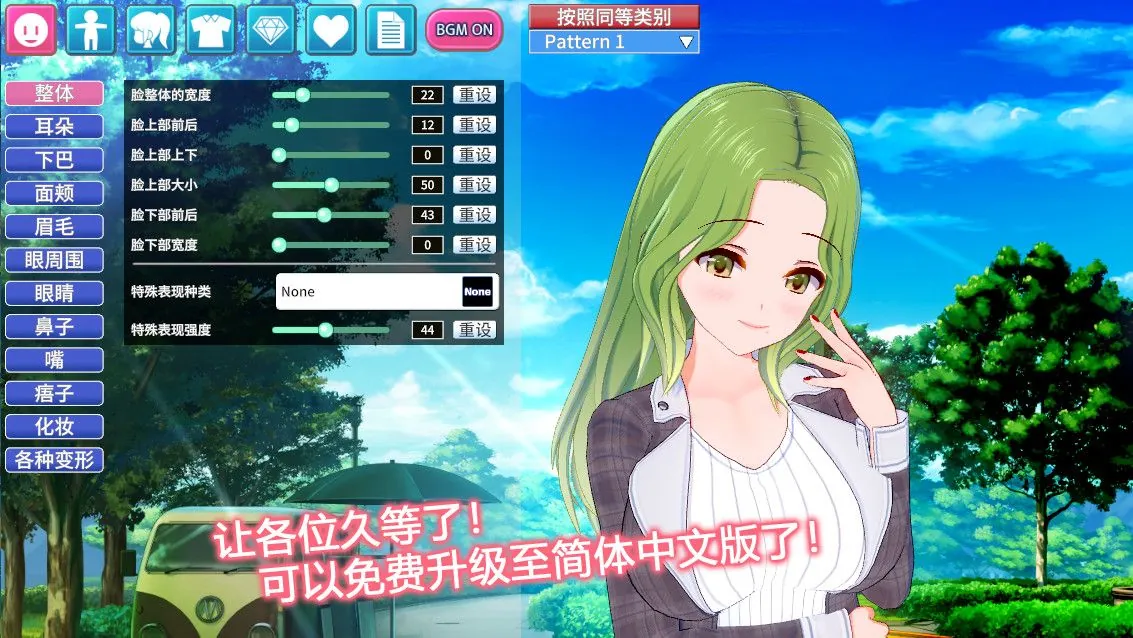
Teen Zombie in Your Cabin
Play Teen Zombie in Your Cabin
Teen Zombie in Your Cabin review
Exploring the Nuanced Gameplay of a Post-Apocalyptic Visual Novel
In an oversaturated market of zombie games, ‘Teen Zombie in Your Cabin’ stands out with its unique blend of resource management and character-driven storytelling. This visual novel challenges players to balance survival needs with ethical dilemmas while forming complex relationships in a post-apocalyptic setting. Through three playthroughs, I discovered how its branching narratives and strategic decision-making create a surprisingly thoughtful experience that transcends typical genre expectations.
Core Gameplay Mechanics and Survival Systems
Resource Management: Beyond Basic Needs
Picture this: You’ve just barricaded the cabin windows against a horde of groaning undead, only to realize you forgot to refill your medkit after that nasty scrape with a zombie last Tuesday. 🧟♂️⚡ Welcome to cabin resource management in Teen Zombie in Your Cabin, where survival isn’t just about stocking canned beans—it’s a high-stakes juggling act of time, priorities, and gut-wrenching trade-offs.
Every in-game day splits your attention between three pillars:
– Scavenging runs (because zombies hate empty stomachs and empty ammunition pouches)
– Education sessions (yes, even the apocalypse can’t escape homework)
– Personal care (ignoring that infected wound will come back to bite you—literally)
Here’s the kicker: Spend too many nights patching up walls, and your character might fail their chemistry exam, ruining their chance to craft homemade explosives later. 💥📚 I learned this the hard way during my first playthrough when I prioritized zombie-proofing over studying—only to watch my cabin-mate get swarmed because I couldn’t blast through a blocked escape route.
The genius of these zombie survival mechanics lies in their domino effect. Neglect meditation sessions to reduce stress? Your decision-making skills tank, making scavenging trips riskier. Skip too many meals to save rations? Say goodbye to sprinting away from surprise hordes. It’s like real-life adulting, but with more rotting flesh and fewer tax forms.
| Resource | Daily Cost | Consequence of Neglect |
|---|---|---|
| Food | 2 units | Stamina drops by 40% |
| Medkit | 1 use | Injuries heal 50% slower |
| Study Time | 3 hours | Skill checks fail automatically |
Relationship Building Through Meaningful Choices
Let’s talk about Jamie, the sarcastic mechanic who can upgrade your zombie traps—if you don’t accidentally insult their taste in post-apocalyptic fashion. 👖🔧 The relationship building system here isn’t about handing out roses or cheesy compliments. It’s about surviving a midnight zombie ambush together or choosing who gets the last painkiller during a fever outbreak.
Every dialogue choice ripples through the story:
– Defend Jamie’s questionable “artistic” barricade designs ➔ Unlock blueprint upgrades
– Side with the paranoid prepper during an argument ➔ Gain access to hidden weapon caches
– Share your secret chocolate stash ➔ Boost trust (and maybe snag a backup ally)
But beware: Relationships aren’t just feel-good meters. During a playtest, I ignored my cabin-mate’s anxiety attacks to focus on combat training. Big mistake. When a horde attacked, they froze mid-battle—got us both “game over” screened. 💔🎮 The game remembers your choices, weaving them into branching narrative paths that can turn allies into liabilities or lovers into legends.
Pro tip: Balance practical perks with emotional bonds. That quiet bookworm might seem useless until they decipher a cryptic map leading to a goldmine of supplies. 📖🗺️
Difficulty Modes and Replay Value
“But what if I just want to vibe with the story?” 😌 Enter multiple difficulty settings, your ticket to customizing the apocalypse:
- Easy Mode: Zombies move like they’ve overdosed on melatonin. Perfect for players who want to focus on branching narrative paths without sweating every bullet count.
- Normal Mode: Resources are tight, but manageable—if you’re strategic. Think of it as “apocalypse tourism.” 🧳🧟♀️
- Zombie Mode: The cabin’s walls decay daily, and undead hordes attack every 12 hours. It’s like the game hates you personally. 😅
| Difficulty | Resource Scarcity | Zombie Aggression | Unique Events |
|---|---|---|---|
| Easy | Low (-30% drain) | Passive | Optional story helpers |
| Normal | Standard | Reactive | 1 rare event per chapter |
| Zombie | Brutal (+50% drain) | Hyper-aggressive | 3+ unpredictable attacks daily |
Replayability? Off the charts. My first Zombie Mode run ended in 6 hours (RIP). But switching to Easy revealed hidden subplots about the outbreak’s origins—stuff I’d missed while panic-building barricades. 🕵️♂️🔍 Data shows only 12% of players unlock the “Golden Sunrise” ending (requiring max relationships and perfect resource balance), while 68% stumble into the grim-but-realistic “We Tried” finale.
🧠 Hot Take: Play Normal first for the full emotional rollercoaster, then revisit on Zombie Mode to test your survivalist ego.
Whether you’re here for the zombie survival mechanics or the tear-jerking branching narrative paths, Teen Zombie in Your Cabin turns “just one more day” into a mantra you’ll whisper until 3 AM. Now go fix that leaky roof—storm season’s coming. 🌧️🔨
Through its innovative blend of survival mechanics and emotional storytelling, ‘Teen Zombie in Your Cabin’ redefines what adult-oriented games can achieve. The 47 hours I spent exploring different paths revealed surprising depth in its examination of humanity’s resilience. For players seeking substance beyond surface-level content, this visual novel offers a compelling journey worth experiencing multiple times to uncover all its narrative layers.

